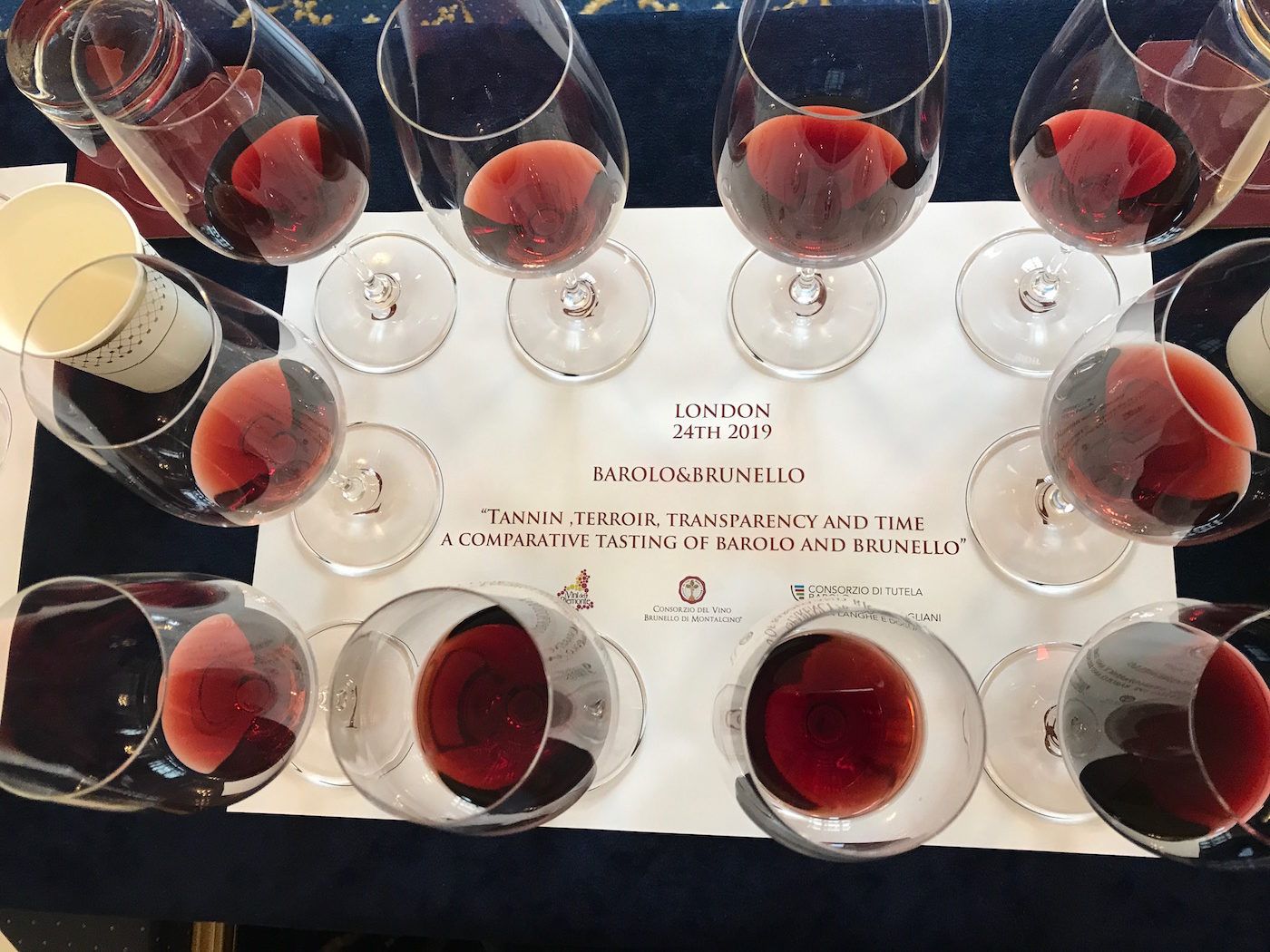Although Brunello and Barolo are the highest regarded types of Italian wine both have just over 2000 hectares each, or the equivalent of one quarter of Valpolicella
There must be something in the water. Last week we had two Loire wine associations, not known for being the most cooperative, join together with Winegrowers of New Zealand no less for the promotion of Sauvignon Blanc Day. And then only a day or two later it was the turn of the two DOCGs who represent Barolo and Brunello di Montalcino to get together and present a united front to the UK trade with an all-day trade/ consumer tasting and presentation. It was like getting the Montagues and the Capulets to host a joint wedding reception.
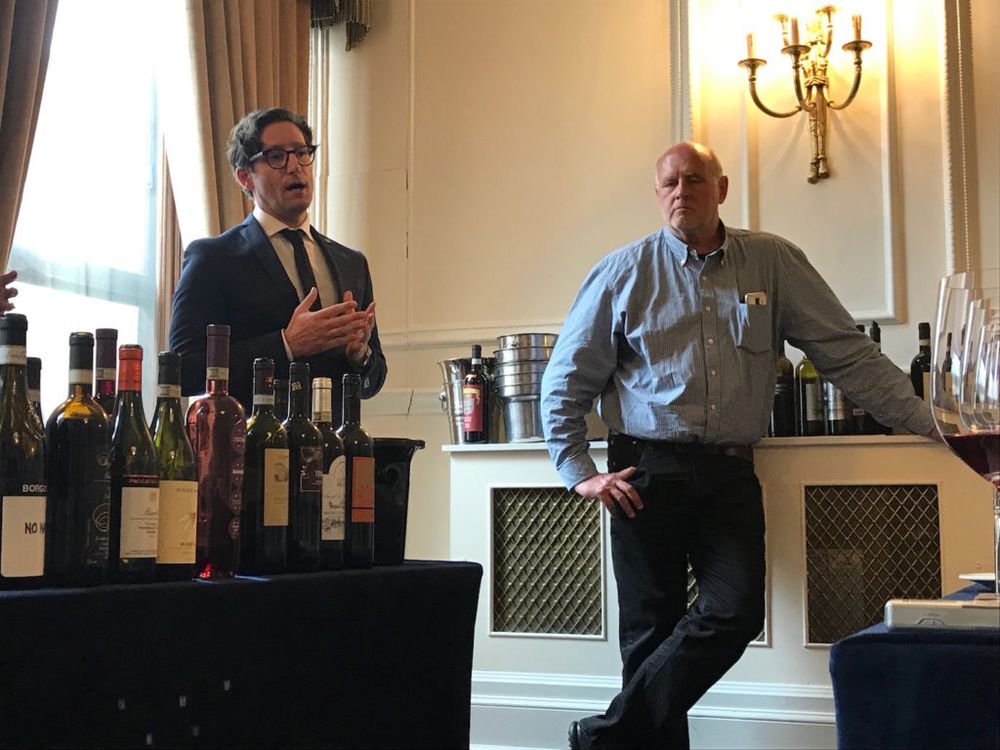
“We promise we’ll work together without any fighting,” Giacomo Pondini, head of the Consorzio for Brunello di Montalcino (left) and Nicola Argamante head of the Consorzio for Piemonte
From a journalist’s point of view not only was it an excellent opportunity to compare and contrast, which was clear from how full the events were and the calibre of those attending, but also for those staging these events it has been a welcome exercise working with two different regions and wine styles.
Sarah Abbott MW said as much at the start of her focussed tasting titled Brunello and Barolo: Tannin, Terroir, Transparency and Time that was run twice at the event, Barolo & Brunello: The Italian Kings.

Abbott said that by tasting Barolo & Brunello alongside one another it clarified the identity of each and showed how one wine informs the other – highlighting the alluring aromatics, the perfume and seductive textures of Barolo, counterpointed against the tension and depth of the Brunello.
“They both use similarly fussy grapes grown in nuanced and healthily knife-edged terroir… they are both ancient varieties whose genetic variability gives them a mercurial relationship with the environment,” Abbott began.
“Nebbiolo gets all the glamorous attention with three quarters of all grapes grown in Barolo being Nebbiolo, although it only makes up 10% of the grape varieties in Piemonte. There are just 5,000 hectares planted of Nebbiolo in the whole of Italy.”
“Sangiovese, on the other hand, is Italy’s ‘reliable red’ with 70,000 hecatres planted in Italy and more than 50% of Italy’s regions allowed to use Sangiovese, often blended with other grapes.”
“Nebbiolo is vigorous and gallops to ripening and needs more moderate temperatures, it is neurotic and drought intolerant; Sangiovese is more adaptable, it likes long, slow ripening, is vigorous and, very importantly, it is drought-resistant, which is why Australia has it.”
“The Sangiovese variant favoured in Brunello is Sangiovese Grosso which is part Tuscan part Calabrian and has bigger bunches and luscious, ripe tannins.”
Heat, rainfall and altitude all play their part in the various expressions of the two grapes and, although Brunello is generally considered to be the warmer of the two regions, Barolo weirdly is in fact the hottest when taken across the year on average.
“The most important thing to make clear is that Brunello is a very dry region,” she said.
Abbott turned back the clock to say that Brunello was the first DOC in 1966 shortly to be followed by Barolo and both became DOCGs in 1980. Brunello used to be seen as making Bordeaux-style wines while Barolo was likened more to Burgundy.
“The industry always used to use French wine as a barometer but I think Barolo and Brunello can stand on their own two feet.”
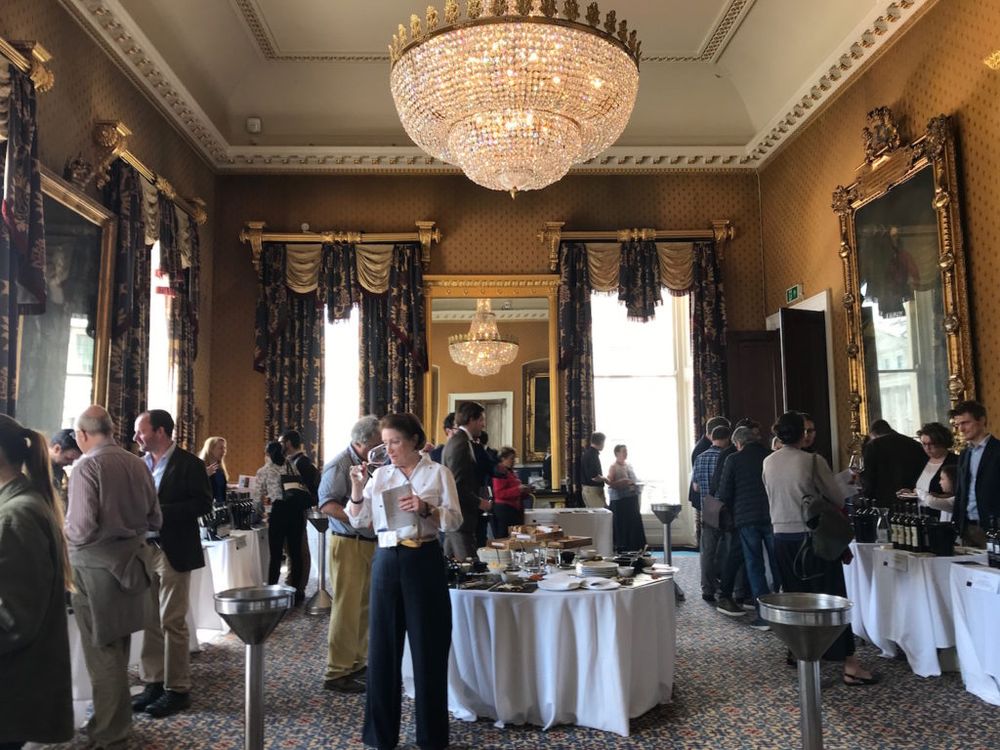
Barolo & Brunello: The Italian Kings, Institute of Directors, London, April 24, 2019
Abbott outlined the difference in soils in both regions that play such a large part in how both grapes interact with their environment. Brunello is a region with a complex geological history with the sea advancing and retreating across its surface several times and plenty of volcanic activity resulting in a complex mix of soils: limestone, clay, schist, volcanic soil and galestro, a type of crumbly marl. Barolo had a less complex history and was largely limestone with the nearby mountains having a dramatic effect on climate and growing cycles.
Their human geography was different too and also an important factor in understanding the differences between the two regions. In Brunello there were many very big estates, loads of countryside where vines can form just a small part of the agricultural output of an estate, in Barolo, however, the region has bigger cities so the rest of the region is covered in vines that butt up close to conurbations.
As for the reputation of both Barolo and Brunello’s tannin structure, Abbott said “They do not come to market to be obdurate or stern, but to still come with some pleasure in the glass.”
She then demonstrated this pleasure by showing five wines from Barolo DOCG and five from Brunello DOCG, that were all tasting remarkably well for such young wines, punctuating the tasting with her always-succinct, sharp observations.

“Both regions have questioned what is their typicity – marrying tradition to the needs are of a changing market. What should Barolo be? I think in Barolo that has settled down now and there is more of a concensus on the style possibilities, for example more moderate use of new oak…’ Modernist’? people don’t talk about that any more, they’re working at lower extraction.”
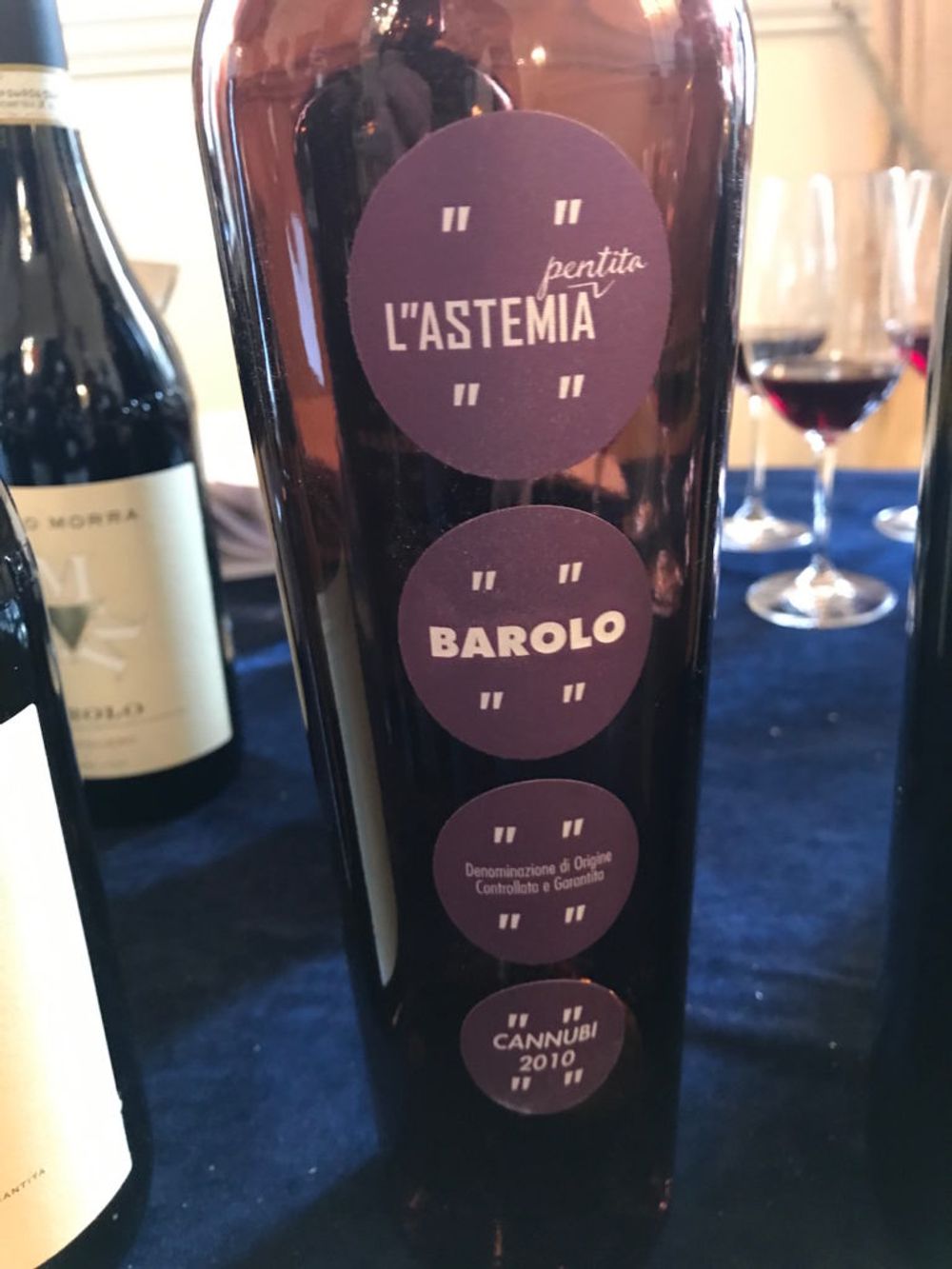
Barolo: marrying tradition with the needs of a changing market.
Because they are working with one grape it was common practice and sensible, she said, for there to be blending across the communes given how variable the altitude, topography and aspect altered ripening times but in the 1990s more single vineyard cuvées started appearing, the crus such as Cannubi enshrined in law and now even communes such as Serralunga d’Alba getting recognition.
Since both Barolo and Brunello regions had been granted World Heritage Site status, both have enjoyed high end cultural tourism “They are both booming with cultural richness, investment and long-term thinking,” Abbott said.
“”It is important that they don’t become museum pieces, though, they are glamorous, they have a classy plushness, I see these Italian reds very much as wines of a nation, they are very Italian: they have a boldness, there’s the glamour, they’re beautiful, sunshine, food, the lifestyle thing. The Champenoise have managed to do it – to market the lifestyle thing to people who are not wine geeks without dumbing down to them and being trite.”
After tasting a Langhe Nebbiolo and four Barolo, we then moved onto a Rosso di Montalcino and four Brunello di Montalcino.
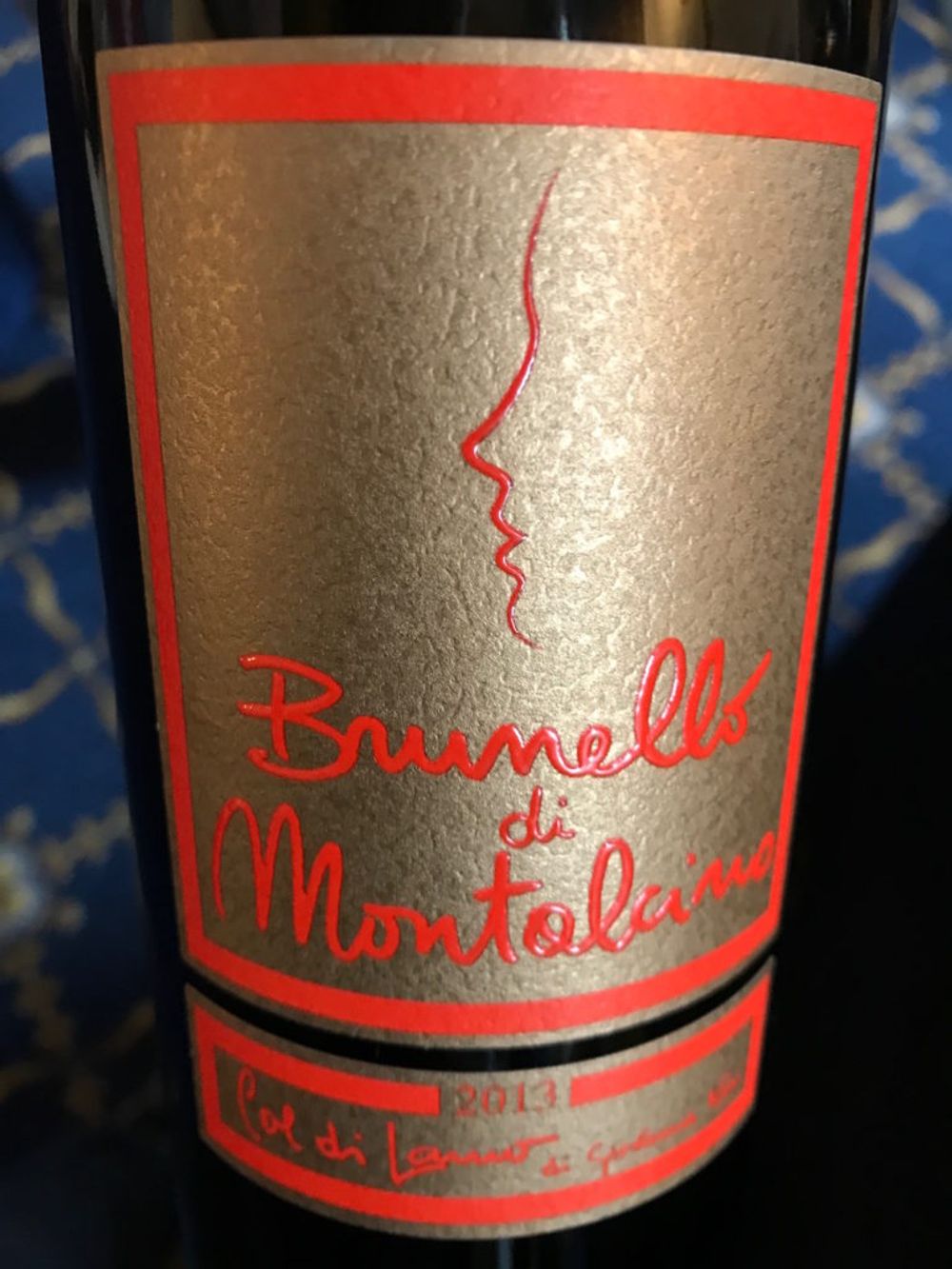
One of the stars of the tasting: Col di Lamo 2013 Brunello di Montalcino
“Feel that balance of tannin,” she said, “the way the wine strikes your palate, it has a looser weave, is voluminous and spreads out in the palate. It is a much plusher style, the generosity of Sangiovese compared to the restraint of Nebbiolo.”
In describing one wine she said: “Notice the different aromatic register, here, it’s almost dangerous: dried herbs, leather, tar, Balsamic, dark fruit with a different texture – you get a real sense of the tannins and alcohol working together.”
Abbott also pointed out that given the profile of these highest established and most famous Italian wines it was remarkable that both regions are only just over 2000 hectares each – about a quarter of the size of Valpolicella, or a third of Burgundy, or Margaux and St Estephe combined.
“They’ve done so much with such small areas and to their credit they haven’t increased the hectarage and ruined what makes them beautiful.”
“And with Bordeaux and Burgundy becoming so expensive now I think there is a massive opportunity here for fine Italian wine.”
Rules and regs
In terms of winemaking regulations set out by the two Consorzio.
Barolo DOCG allows for a maximum grape yield of 8,000 kg per hectare. Ageing is 38 months of which 18 are in wood. For Barolo Riserva the yield is the same but ageing is 62 months, of which 18 are in wood.
Brunello di Montalcino DOCG is the same maximum grape yield of 8,000 kg per hectare. Ageing is minimum 24 months in oak and four months in bottle. For Brunello di Montalcino Riserva DOCG the yield is the same and ageing in oak is also minimum 24 months but in bottle it must be minimum six months in bottle.
